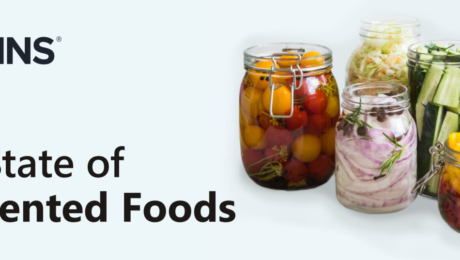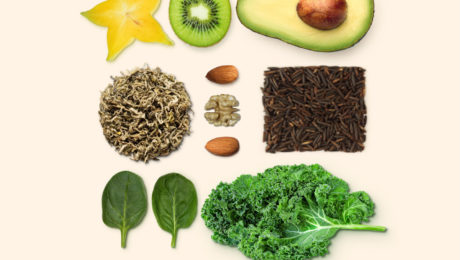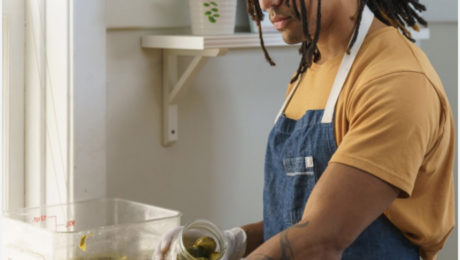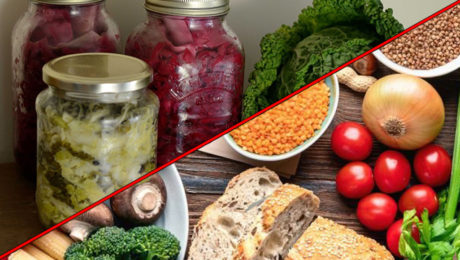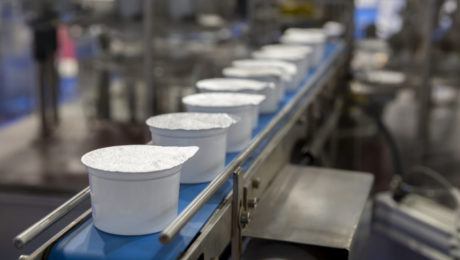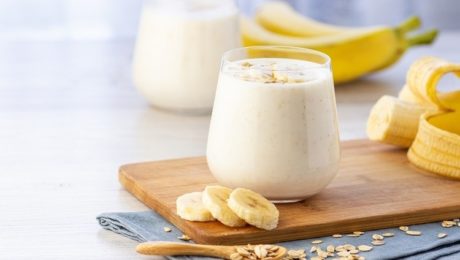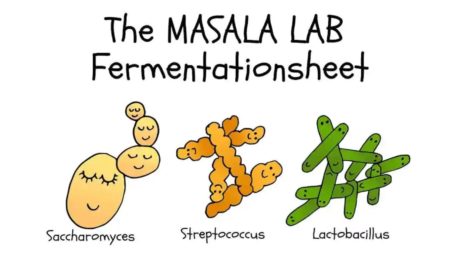Retail Sales Trends for Fermented Products
Miso, frozen yogurt and pickled and fermented vegetables are driving growth in the $10.97 billion fermented food and beverage category. The fermented products space grew 3.3% in 2021, outpacing the 2.1% growth achieved by natural products overall.
“It really highlights how functional products have become the norm for shoppers when they’re in stores,” says Brittany Moore, Data Product Manager for Product Intelligence at SPINS LLC, a data provider for natural, organic and specialty products. Moore notes there’s an “explosion of functional products” in the market — “[they] are appearing everywhere. And fermented products have been leading that space in the natural market for years.”
The data was shared during TFA’s conference, FERMENTATION 2021. SPINS worked with TFA to drill into data covering 10 fermented product categories and 64 product types (an increase from last year). [A note that wine, beer and cheese sales are excluded from the data. These categories are very large, and would obscure trends in smaller segments. Wine, beer and cheese are also well-represented by other organizations.]
Yogurt dominates the fermented food and beverage landscape with 75% of the market, but sales growth is soft. Frozen yogurt and plant-based offerings, though small portions of the yogurt category, are fueling what growth there is. “Novelty products are catching shopper’s eyes,” Moore notes.
Kombucha, the fermented tea which led the U.S. retail revival of fermented products, still rules the non-alcoholic fermented beverages market, with 86% of sales. But growth is slowing. Moore points out that this slowdown is due to kombucha having penetrated the mass market with lots of brands on grocery shelves.
“There’s opportunity in kombucha for new innovations to catch the progressive shopper’s eye,” Moore says. “Shoppers are looking for an innovative twist to their functional product.”
Moore points to successful twists like hard kombucha, which grew nearly 60%, and probiotic sodas, which grew 31%.
Growth is slowing for hard cider, too, though hard cider leads the alcoholic beverages category with 83% share of sales.
All sectors of the pickled and fermented vegetables category are growing, totalling nearly $563 million in sales. Refrigerated products are nine of the top 10 subcategories here. The “other” pickled vegetable subcategory is increasing at a 60% growth rate, “other” being the catch-all for vegetables that are not cucumbers, cabbage, carrots, tomatoes, beets or ginger. Fermented radish, garlic and seaweed fall into this subcategory.
Soy sauce is not surprisingly still the largest product in sauces, representing 58% of the category. But that share is dropping. Gochujang is the growth leader, increasing at rate of nearly 20%.
Miso and tempeh are also performing well, which Moore attributes to the growing plant-based movement and the Covid-19 pandemic pantry stocking boom. Miso products — soups, broths, pastes and mixes — totaled over $24 million in sales in 2021. Though instant soups and meal cups represented only 8% of sales, they grew more than 110%.
- Published in Business
Fermented Foods Top 2022’s Superfood List
For the fifth year in a row, fermented foods again top the Today’s Dietitian annual list of superfoods.
The 10th annual What’s Trending in Nutrition survey “reveals a wave of change resulting from the pandemic.” Public relations firm Pollock Communications, who conducted the survey for the magazine, surveyed 1,173 Registered Dietitian Nutritionists (RDNs) about trends for 2022. The “most surprising change from the past decade,” RDNs agreed, was “the shift from low-carb to high-fat diets…followed by plant-based eating.”
Health- and immunity-boosting food “will be the biggest trend in the next decade that will shape changes in the food industry.” Immunity support, affordability and emotional well-being are consumers’ top purchase drivers; convenience, healthy, taste, low-cost and natural are the top label attributes.
The label attribute “healthy” first made the top three list in 2019 “as consumers began to better understand the connection between food and overall well-being.” RDNs say the Covid-19 pandemic accelerated the healthy food trend.
“With the focus on health and immunity in the next decade, and the increased popularity of plant-based eating, nutrient-dense options will be an important part of consumer diets, as [consumers]embrace food as medicine to help prevent disease,” says Louise Pollock, president of Pollock Communications. “In addition, there will likely be an increased interest in functional foods containing ingredients that provide health benefits beyond their nutrient profile.”
Consumer desire for gut-boosting benefits pushed fermented foods to #1 on the list. Changes to the top 10 show salmon is out and ancient giants are in.
“The predictions of RDNs, the frontline experts in food and nutrition, are always reliable to help food and beverage manufacturers and marketers meet the demands of consumers. Our survey has accurately tracked health and wellness trends for a decade,” says Mara Honicker, publisher of Today’s Dietitian. “We are pleased to have been able to share these insights for the past ten years and especially during this chaotic time in our lives, when food is playing such a major role in providing health, wellness and emotional support.”
The full superfoods list is:
- Fermented foods, like yogurt and kefir
- Blueberries
- Seeds, like chia and hemp
- Exotic fruit, like acai and golden berries
- Avocados
- Green tea
- Nuts
- Ancient grains
- Leafy greens, like spinach
- Kale
To read all the takeaways from the 2022 survey, check out the Pollock Communications press release.
- Published in Food & Flavor, Health
Q&A: Sebastian Vargo, Vargo Brother Ferments
Sebastian Vargo was an up-and-coming chef on the Chicago food scene when the Covid-19 pandemic hit and shuttered restaurants. Laid off from his job as head chef at Merchant Restaurant, Vargo experimented with different gigs — yoga teacher, realtor, even t-shirt graphic designer — but kept coming back to his passion: creating food.
So Vargo and his fiancée, Taylor Hanna, launched Vargo Brother Ferments. They produce a creative line-up of fermented condiments, sauces and beverages, including items like a pickled garlic sauce, chipotle beet sauerkraut, Mighty Vine tomato vinegar, Concord grape kombucha and a Bulgarian yogurt with fermented strawberry jam and miso peanut butter.
“Ultimately, I’m a flavor chaser,” Vargo says. “Fermentation is not really an obligation, it’s a necessity to really unlock certain flavors.”
Most of what they make is seasonal, created from fresh ingredients sourced locally from Chicago community gardens or out of Vargo’s backyard garden. Flavors heralding back to Vargo’s childhood are also featured. Collard greens kimchi is one example, featuring the leafy vegetable frequently served at Vargo’s family dinner table as he grew up in Detroit.
“You can’t help but find a little bit of nostalgia in what you make. Flavors are so connected to memories,” Vargo says. He recalls his mother’s buttery cornbread, her pinto beans flavored with a smoked ham hock and his grandmother’s braised short ribs with sauerkraut. “We were this African-American family in the Midwest in the ‘90s with Southern heritage, so some of my food preserves some of that history. With fermentation, there’s an intersection of both physical preservation and historical preservation. My fermented vegetables are an homage to the past, presenting certain vegetables in interesting and complex ways.”
Vargo and Hanna currently run their business from their home kitchen, selling over Instagram, at farmers markets and through collaborations with local restaurants around the Chicago area. They’re nearing the end of a Go Fund Me campaign to help move Vargo Brother Ferments into a commercial kitchen and, eventually, a storefront. .
Below is an edited Q&A between Vargo and The Fermentation Association.
The Fermentation Association: How did you first get into cooking?
Sebastian Vargo: My origin is with my grandmother. My mom worked really hard, she worked nights and then she was going to school as well. My grandmother was in our household a lot, she taught me and my brothers [the namesake behind Vargo Brother Ferments] a lot of life skills, how to box, how to play basketball, how to cook. I have fond memories of eating sauerkraut as a child out of a coffee mug with a fork. She was my earliest inspiration, I have fond memories of my grandma in the kitchen.
TFA: And how did you get into fermentation?
SV: My grandma introduced me to sauerkraut. It was such an exciting flavor, I hadn’t experienced the brininess of lactic fermentation, the way it feels on my tongue and cheeks. My mom loved to take us to local delis and we loved Reuben sandwiches. We’d go to a lot of Jewish delis in southeast Michigan, and they had salt brine pickles. That was a real fermented pickle, that flavor is something, too, that really kind of jump started my interest in fermentation.
And then, just working with cool chefs. A new part of my mind was unlocked at every restaurant. Great chefs helped cultivate my love of fermentation. Being in the industry in Chicago is so cool. Every last one of us, we’re all trying to experiment and see what we can do with flavors. When I worked for Stephanie Izard at Girl & the Goat, we were doing kimchi for certain dishes. At Schwa with Brian Fisher and later Wilson Bauer, we made our own yogurt and fermented our leeks, our apricots. And then when I worked for Tony Quartaro at Dixie, he was really pushing the envelope with this Southern-style restaurant where we took inspiration from around the world in a way and applied it to this Southern technique. We had some peaches come in that were underripe, we couldn’t use them for the actual dish, so instead he mixed it with some rum and taught me how to make a vinegar out of it.
TFA: What took you from Detroit to cheffing in Chicago?
SV: It was one Le Cordon Bleu commercial. I was young, I was in a bit of a crossroads and I made the decision to go to the Le Cordon Bleu culinary school in Chicago. I was working at the Salvation Army at the time and I got on the Megabus with my little thrift bags and maybe $800. I had no plans, I found out $800 will not get you an apartment in Chicago, so I stayed in hostels. Before I got enough money for culinary school, I worked as a canvasser to make money.
TFA: March 2020. You are the head chef at Logan Square’s Merchant and your fiancée was cooking at the Ace Hotel. Then Covid-19 lockdowns happen. Tell me how your lives changed.
SV: Merchant was the first restaurant where I was head chef, it was fun. We made our own hot sauces, we fermented pickles. But once I had the call that we were closing for Covid, I was ready to figure something out. I was a little bit burnt out from the industry at the time. I was ready to leave, it’d been a lot of pressure and a lot of stress for a while. So, like a lot of Americans, we took the unemployment. I had never been on unemployment. Being unemployed gave me a chance to finally reset. I was working up to 120 hours a week cheffing around. Now I could see what else is out there.
The whole time I was looking outside of the industry, me and Taylor were still doing a lot of experiments in the kitchen. We were making a lot of bagels, making pickles. I have a friend Joe Morski who runs a one-man sandwich operation called Have a Good Sandwich. It’s like a rotating sandwich club in Chicago. Meanwhile, I was trying to start a pickle club, and I asked him if he wanted to serve my pickles in the lunch pack for his sandwiches. That was my first foray into getting my pickles out there. From there, we just started peddling our jars.
TFA: What was the transition to your own business?
SV: To this day, there’s so few fermented, unpasteurized pickles on the market. It wasn’t even a search for a niche, it was something I love to do and I was excited to share my flavor palette with the public. Fermentation is a fun way to be creative, to use it as a platform for new dishes, to play aground with colors. It’s definitely been a great medium to pursue my love of food, of art. Feeding people is my love language. And fermentation is definitely something that’s going to live on forever. It’s wellness, it’s never going to go out of style.
TFA: Tell me about your G-Dilla pickle. That’s a customer favorite. What makes it so special?
SV: The G-Dilla pickle is a flagship that’s always in season. The name G-Dilla, we have blank labels and I didn’t want to write “Garlic Dill” each time. So I started G-Dilla as an homage to J-Dilla, a great producer [and rapper from Detroit].
The taste is akin to a Jewish deli, a garlic dill pickle, the one that would accompany a Reuben sandwich. I just take it kind of a step further with the herbs and the garlic. We use black tea in our pickle brine, it is a fun way to add tannins to the mix which provides that nice, crunchy skin. We really enforce the flavors through fresh herbs, fresh dill from our backyard, parsley, grape leaves, fresh bay leaf and we add lots of garlic and toasted block peppercorn and mustard seed. Maybe a little gochujang, some turmeric. You bite into one and you’re getting that loud crunch and you’re just getting that lactic acid zing that’s electrifying the flavor. It makes you stop what you’re doing, you can’t talk through it, you have to finish chewing and enjoy the whole experience. It’s been a journey — I think back to the first pickle I made to now and it’s something I’ve kept at, I’m a student of the game, always striving to learn more techniques and refine what I’m doing.
TFA: Why do you think more and more chefs are exploring fermentation?
SV: I think so many chefs are seeing the flavor benefits alone. Food fermentation offers a more nuanced flavor that you just can’t achieve the same way. Fermentation is in everything that we do, everything that we eat. There is really an endless source of inspiration and flavor for chefs. We’ve seen the interest pick up in fermentation, but it’s not a fad in the food world. Fermentation is something that is here to stay, with the recent explosion and interest in it, fermentation will find a nice settling place in food.
TFA: What do you think is the future of fermentation?
SV: I would like to see a future in which fermentation is no longer just a trending topic, something that everyone acknowledges for its real health benefits. So people aren’t just taking a probiotic gummy, they know they can get probiotics easily through so many foods. Society is at a place where we are not quite as healthy as we should be. Maybe we can make fermentation convenient, maybe we can show people that it’s not hard, we can show folks that there’s food you can have that has enhanced flavors and there’s something in fermentation for everyone.
- Published in Business, Food & Flavor
Fermentation vs. Fiber — Both Help, but Fermentation Shines
A diet high in fermented foods increases microbiome diversity, lowers inflammation, and improves immune response, according to researchers at Stanford University’s School of Medicine.The groundbreaking results were published in the journal Cell.
In the clinical trial, healthy individuals were fed for 10 weeks, a diet either high in fermented foods and beverages or high in fiber. The fermented diet — which included yogurt, kefir, cottage cheese, kimchi, kombucha, fermented veggies and fermented veggie broth — led to an increase in overall microbial diversity, with stronger effects from larger servings.
“This is a stunning finding,” says Justin Sonnenburg, PhD, an associate professor of microbiology and immunology at Stanford. “It provides one of the first examples of how a simple change in diet can reproducibly remodel the microbiota across a cohort of healthy adults.”
Researchers were particularly pleased to see participants in the fermented foods diet showed less activation in four types of immune cells. There was a decrease in the levels of 19 inflammatory proteins, including interleukin 6, which is linked to rheumatoid arthritis, Type 2 diabetes and chronic stress.
“Microbiota-targeted diets can change immune status, providing a promising avenue for decreasing inflammation in healthy adults,” says Christopher Gardner, PhD, the Rehnborg Farquhar Professor and director of nutrition studies at the Stanford Prevention Research Center. “This finding was consistent across all participants in the study who were assigned to the higher fermented food group.”
Microbiota Stability vs. Diversity
Continues a press release from Stanford Medicine News Center: By contrast, none of the 19 inflammatory proteins decreased in participants assigned to a high-fiber diet rich in legumes, seeds, whole grains, nuts, vegetables and fruits. On average, the diversity of their gut microbes also remained stable.
“We expected high fiber to have a more universally beneficial effect and increase microbiota diversity,” said Erica Sonnenburg, PhD, a senior research scientist at Stanford in basic life sciences, microbiology and immunology. “The data suggest that increased fiber intake alone over a short time period is insufficient to increase microbiota diversity.”
Justin and Erica Sonnenburg and Christopher Gardner are co-authors of the study. The lead authors are Hannah Wastyk, a PhD student in bioengineering, and former postdoctoral scholar Gabriela Fragiadakis, PhD, now an assistant professor of medicine at UC-San Francisco.
A wide body of evidence has demonstrated that diet shapes the gut microbiome which, in turn, can affect the immune system and overall health. According to Gardner, low microbiome diversity has been linked to obesity and diabetes.
“We wanted to conduct a proof-of-concept study that could test whether microbiota-targeted food could be an avenue for combatting the overwhelming rise in chronic inflammatory diseases,” Gardner said.
The researchers focused on fiber and fermented foods due to previous reports of their potential health benefits. High-fiber diets have been associated with lower rates of mortality. Fermented foods are thought to help with weight maintenance and may decrease the risk of diabetes, cancer and cardiovascular disease.
The researchers analyzed blood and stool samples collected during a three-week pre-trial period, the 10 weeks of the diet, and a four-week period after the diet when the participants ate as they chose.
The findings paint a nuanced picture of the influence of diet on gut microbes and immune status. Those who increased their consumption of fermented foods showed effects consistent with prior research showing that short-term changes in diet can rapidly alter the gut microbiome. The limited changes in the microbiome for the high-fiber group dovetailed with previous reports of the resilience of the human microbiome over short time periods.
Designing a suite of dietary and microbial strategies
The results also showed that greater fiber intake led to more carbohydrates in stool samples, pointing to incomplete fiber degradation by gut microbes. These findings are consistent with research suggesting that the microbiome of a person living in the industrialized world is depleted of fiber-degrading microbes.
“It is possible that a longer intervention would have allowed for the microbiota to adequately adapt to the increase in fiber consumption,” Erica Sonnenburg said. “Alternatively, the deliberate introduction of fiber-consuming microbes may be required to increase the microbiota’s capacity to break down the carbohydrates.”
In addition to exploring these possibilities, the researchers plan to conduct studies in mice to investigate the molecular mechanisms by which diets alter the microbiome and reduce inflammatory proteins. They also aim to test whether high-fiber and fermented foods synergize to influence the microbiome and immune system of humans. Another goal is to examine whether the consumption of fermented foods decreases inflammation or improves other health markers in patients with immunological and metabolic diseases, in pregnant women, or in older individuals.
“There are many more ways to target the microbiome with food and supplements, and we hope to continue to investigate how different diets, probiotics and prebiotics impact the microbiome and health in different groups,” Justin Sonnenburg said.
Other Stanford co-authors are Dalia Perelman, health educator; former graduate students Dylan Dahan, PhD, and Carlos Gonzalez, PhD; graduate student Bryan Merrill; former research assistant Madeline Topf; postdoctoral scholars William Van Treuren, PhD, and Shuo Han, PhD; Jennifer Robinson, PhD, administrative director of the Community Health and Prevention Research Master’s Program and program manager of the Nutrition Studies Group; and Joshua Elias, PhD.
Researchers from the nonprofit research center Chan-Zuckerberg Biohub also contributed to the study. Here’s the complete press release from Stanford Medicine News Center.
Does New FDA Yogurt Standard Fall Short?
Forty years after the U.S. Food and Drug Administration (FDA) released its first legal definition of yogurt, the government agency has now updated that standard of identity. But, according to the International Dairy Foods Association (IDFA), this new final rule is so outdated and out-of-touch with yogurt makers that popular products could be removed from grocery store shelves. The IDFA, which represents the nation’s dairy manufacturing industry, submitted an 87-page formal objection to the FDA.
“The result is a yogurt standard that is woefully behind the times and doesn’t match the reality of today’s food processing environment or the expectations of consumers,” says Dr. Joseph Scimeca, senior vice president of IDFA’s Regulatory and Scientific Affairs.
The IDFA is particularly concerned that the FDA crafted its final rule using comments made when the agency first pitched the guideline 12 years ago. Scimeca continues: “the final rule is already out of date before it takes effect…as if technology has not progressed or as if the yogurt making process itself has been trapped in amber like a prehistoric fossil.”
The revised standard does not include IDFA’s recommended revisions.
Read more (IDFA)
- Published in Business
Dairy-Free “Vegurt”
Chr. Hansen, a global bioscience supplier of ingredients, has developed Vega Culture Kits, a new line of probiotic starter cultures that can be used to create plant-based yogurt. “Vegurt,” a shortening of vegan or vegetarian yogurt, is the name being used for this non-dairy product. This term was created in reaction to the European Parliament’s current debate over whether plant-based products can use dairy-related terms like yogurt and milk.
“Vegurt seemed a catchy and suitable category name compared to having to sprain our tongues calling them ‘fermented plant-based alternatives to dairy yogurt,’” said Dr. Ross Critenden, senior director for commercial development at Chr. Hansen.
The Vega Culture Kits are designed to “robustly ferment” any dairy-free plant base, like nuts, cereals, legumes or seeds. The Vega Culture will appear as “culture” on ingredient lists, in the same way that dairy yogurts include “culture” when cultures or probiotic strains are added.
Read more (Food Navigator)
- Published in Science
“Strategic Rotting”
Fermentation saved the human diet, argues Krish Ashok, author of Masala Lab: The Science of Indian Cooking. He calls fermentation strategic rotting. The discovery of fire was key to the human’s survival as they learned to cook meat, but fermentation allowed civilization to create bread and alcohol, turn milk into yogurt and preserve a harvest through the winter.
“Fast forward a few millennia, and we have mastered fermentation to the point where we can pick and choose microbes with precision and generate complex flavours in the bargain,” Ashok writes. Pictured, his charming drawings illustrate microbes used in fermentation.
Read more (Mint Lounge)
- Published in Food & Flavor
The Many Sides of Kefir
When Julie Smolyansky began working at her family’s Lifeway Foods business, her father advised her: “Don’t talk about the bacteria. People in America freak out about the bacteria on their food.” So when Lifeway became the first company in the U.S. to put “probiotic” on a label in 2003, it wasn’t a big surprise when customers began calling, asking for the company’s non-probiotic version of kefir.
Americans have come a long way. Consumers today search for the “live, cultured” label on fermented dairy, and gut health is a critical component of the modern diet. Smolyansky and Raquel Guajardo, author/educator, shared their thoughts on kefir during the TFA webinar The Many Sides of Kefir.
“Fermented foods were not part of the American diet, and the way that kefir and fermented foods in general were used in other parts of the world from Asian to Eastern Europe to even India and Mexico, these cultures all have fermented foods as one of their pillars as their foods sources and their health and wellness cultures,” Smolyansky says. “It wasn’t until immigration from all these other countries that we started talking about kimchi or kefir or lassi or you name your cultured kind of special food.”
In the U.S., the average person consumes 9-10 cups of fermented dairy a year. Contrast that statistic with Europe, where the average consumption is 28 cups a month.
“When you’re born consuming it and you’ve developed that taste palette, then it’s very easy to play in the space and have a diet that’s very rich in probiotics and kefir and all sorts of other fermented foods,” Smolyansky says, adding that the situation is changing in the U.S. Now, “people are hungry for it, they want it, once they learn about it, once they taste it, they fall in love with it, they’re hooked.”
Lifeway’s kefir’s sales have soared. The company was valued at $12 million when Smolyansky took over in 2002 — now it’s valued into the hundreds of millions. And even more customers have found kefir during the COVID-19 pandemic, as they adopt healthier lifestyles.
Guajardo has seen her online classes increase during COVID. The Mexico-based educator co-authored the book “Kombucha, Kefir, and Beyond” with Alex Lewin, TFA advisory board member, who moderated the webinar.
“People say ‘You’re crazy, why do you teach what to do at home what you can buy in the supermarket?’ But my business has been growing that way,” she says, adding that health benefits are the main selling point for her classes. “Why would people buy sauerkraut or kefir if you’re not explaining the benefits?”
Dairy Kefir vs. Water Kefir
Guajardo, who makes both dairy kefir and water kefir (also known as tibicos) stresses that the grains used to make each are “totally different.” Kefir grains are living bacteria and yeast microorganisms clumped together with milk proteins and sugars. They are gelatinous and white, almost like cottage cheese. Water kefir grains are also made from living bacteria and yeast microorganisms, but they’re clumped together with sugar and have a translucent, crystal-like appearance.
“Water kefir” is not the appropriate term, Guajardo and Smolyansky agree, instead calling it by its traditional Mexican name, tibicos. And they feel that using kefir or tibicos grains in coconut or almond milk and calling it kefir is also inappropriate. Smolyansky favors using a description like cultured coconut milk or beverage, but not kefir.
The National Dairy Council and Codex Alimentarius, the international food code, both state kefir is a fermented dairy product made from the milk of a lactating mammal. Smolyansky points to the many peer-reviewed studies on kefir, verifying it is full of probiotics and nutrients. Water kefir and non-dairy kefir have not been studied, and can’t guarantee the same health benefits.
“Just by throwing the name onto anything and just bastardizing the definition, we completely dilute any of the research that’s ever been done [on kefir], it would dilute the history, the folklore. So we are very passionate about protecting the name,” Smolyansky says. “My ancestors made sure that kefir survived for 2,000 years, and it’s critical that we don’t dilute it now that it’s having a moment, now that it’s popular.”
Smolyansky’s family emigrated to the United States from the then Soviet Union in the late ‘70s. Her father, Michael, began Lifeway Foods in Chicago in 1986.
“We have to respect the standards and what these definitions mean or it will be the Wild West and people won’t know what they’re buying,” she adds. She shares the labelling of ice cream as an example — ice cream is considered dairy while non-dairy products have other names, like sorbet, gelato or non-dairy frozen dessert.
Can Kefir Grow Like Yogurt?
Yogurt has paved the way for kefir to expand its consumer base in the U.S. Both are fermented dairy products with tangy tastes. But for kefir to achieve widespread, mainstream adoption like yogurt, significant education is needed. Thousands of peer-reviewed studies prove kefir contains a higher concentration of probiotics than yogurt — and a wider range of beneficial bacteria. For kefir to grow, this message needs to reach consumers.
“It’s a different set of microbes,” Lewin says. “Kefir is fermented with yeast and yogurt isn’t. Kefir has a larger family of microbes.”
Smolyansky is passionate that kefir cannot be compared to the products of the major. yogurt companies.
“The yogurt produced in the United States is so over-produced and so over-pasteurized that there’s practically nothing living in it after it’s been processed,” she says. “It’s one of the biggest problems with yogurt in the U.S.”
Lifeway regularly sends their products to be tested for probiotics, measuring Colony Forming Units (CFUs), the active microorganisms in a food product. Smolyansky says eating probiotics is critical in a germ-phobic, antibody-heavy society, where we’re over-sanitizing due to the coronavirus pandemic.
“If our bodies aren’t fighting an outside kind of pathogen, it starts to fight itself,” she says. “One of the ways to counteract this disruption in our microflora is by the use and the introduction of consistently replenishing microflora including diversity of bacteria, a variety of food sources that offer bacteria, the diversity and kind [of bacteria] is always the king. It makes for great food environments in the gut.”
- Published in Business, Food & Flavor
Cautionary Notes about Probiotics
Do probiotic supplements deliver the same benefits as fermented foods? Dr. Gail Cresci says to be leery of prebiotic and probiotic pills.
“There are challenges to keeping microbes viable in encapsulated tablets,” says Cresci, director of Nutrition Research for the Cleveland Clinic’s Department of Pediatric Gastroenterology, Hepatology and Nutrition. “It’s also very, very important to know that each strain of bacteria is not the same as the next. For example, lactobacillus has hundreds of different strains, and each one may behave differently. People like to use supplements because they like to think one size fits all, but it doesn’t.”
“Take in prebiotics and probiotics through food sources. Yogurt with added probiotic bacterial strains is much better to consume than supplements also because as it’s been waiting for you to eat it, it’s been producing more beneficial metabolites. When you eat it, you get all that.”
Read more (American Heart Association/U.S. News & World Report)
The New Definition of Fermented Food
After Dr. Bob Hutkins finished a presentation on fermented foods during a respected nutrition conference, the first audience question was from someone with a PhD in nutrition: “What are fermented foods?”
“I thought ‘Doesn’t everyone know what fermentation is?’ I realized, we do need a definition. Those of us that work in this field know what we’re talking about when we say fermented foods, but even people trained in foods do not understand this concept,” says Hutkins, a professor of food science at the University of Nebraska-Lincoln. He presented The New Definition of Fermented Foods during a webinar with TFA.
Hutkins was part of a 13-member interdisciplinary panel of scientists that released a consensus definition on fermented foods. Their research, published this month in Nature Reviews Gastroenterology & Hepatology, defines fermented foods as: “foods made through desired microbial growth and enzymatic conversions of food components.”
“We needed a definition that conveyed this simple message of a raw food turning into a fermented food via microorganisms,” Hutkins says. “It brings some clarity to many of these issues that, frankly, people are confused about.”
David Ehreth, president and founder of Alexander Valley Gourmet, parent company of Sonoma Brinery (and a TFA Advisory Board member), agreed that an expert definition was necessary.
“As a producer, and having started this effort to put live culture products on the standard grocery shelf, I started doing it as a result of unique flavors that I could achieve through fermentation that weren’t present in acidified products,” Ehreth says. “Since many of us put this on our labels, we should be paying close attention to what these folks are doing, since they are the scientific backbone of our industry.”
Hutkins calls fermented foods “the original shelf-stable foods.” They’ve been used by humankind for over thousands of years, but have mushroomed in popularity in the last 15. Fermented foods check many boxes for hot food trends: artisanal, local, organic, natural, healthy, flavorful, sustainable, innovative, hip, funky, chic, cool and Instagram-worthy.
Nutrition, Hutkins hypothesizes, is a big driver of the public’s interest in fermentation. He noted that Today’s Dietitian has voted fermented foods a top superfood for the past four years.
Evidence to make bold claims about the health benefits of fermentation, though, is lacking. Hutkins says there is observational and epidemiological evidence. But randomized, human clinical trials — “the highest evidence one can rely on” — are few and small-scale for fermented foods.
Hutkins shared some research results. One study found that Korean elders who regularly consume kimchi harbor lactic acid bacteria (LAB) in their GI tract, providing compelling evidence that LAB survives digestion and reaches the gut. Another study of cultured dairy products, cheese, fermented vegetables, Asian fermented products and fermented drinks found that most contain over 10 million LAB per gram.
Still, the lack of credible studies is “a barrier we have to get past,” Hutkins says. There are confirmed health benefits with yogurt and kefir, but this research was funded by the dairy industry, a large trade group with significant resources.
“I think there’s enough evidence — most of it through these associated studies — to warrant this statement: fermented foods, including those that contain live microorganisms, should be included as part of a healthy diet.”

